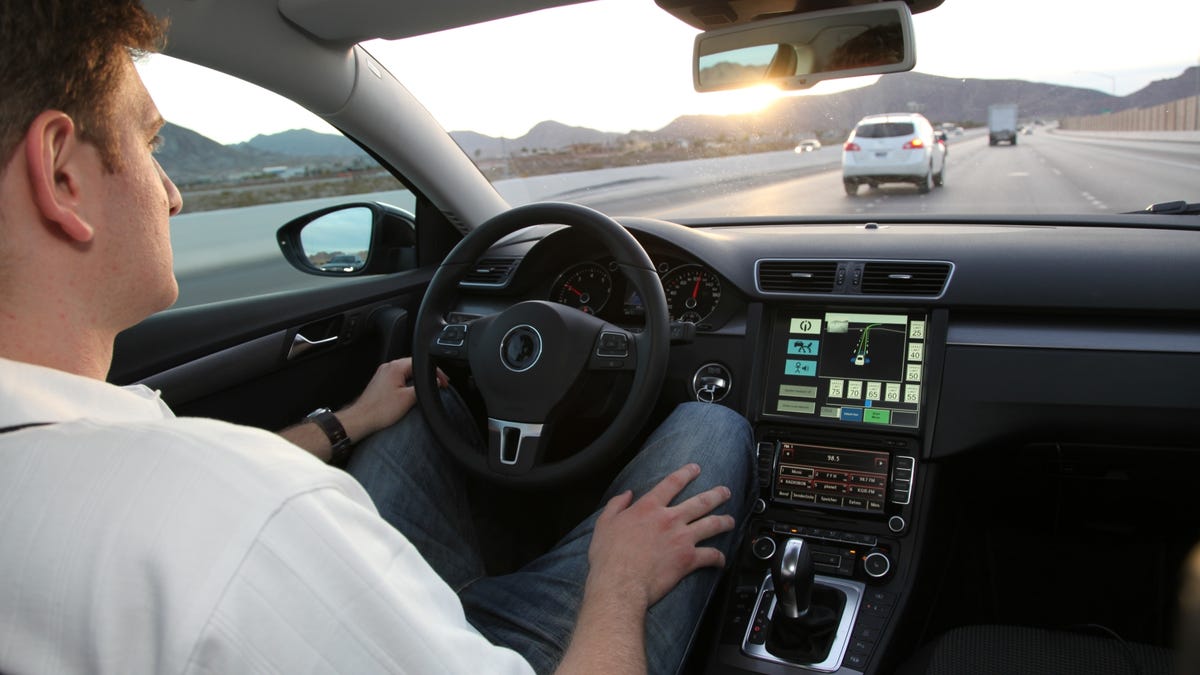Supplier Continental expects self-driving cars by 2020
The German company, already with significant experience in car-control systems, expects cars to take over driving duties partially in 2016 and all the way by 2020.

Continental, a major automotive supplier in Germany, expects its technology research will yield self-driving cars by 2020.
The company has invested more than $130 million on self-driving car research so far, said spokesman Vincent Charles. It began participating in DARPA self-driving car challenges in 2007, is licensed to test autonomous vehicles in Nevada, and has 1,300 researchers working on technology to assist drivers and eventually take over altogether.
"We're quite engaged and have a clear road map," Charles said Friday. On that schedule: partially automated cars by 2016 and highly automated cars for consumers by 2020, he said. In its Nevada tests, Continental's vehicle has logged 15,000 miles of autonomous driving so far, and no accidents.
The 2020 date is not uncommon. BMW and General Motors both have predicted self-driving cars by 2020, for example. Google appears set for a more aggressive timetable, though. Like Google and Conti, Audi is testing self-driving vehicles in Nevada.
Continental's efforts garnered new attention this week after a report that it's working on autonomous-vehicle partnerships with Google and IBM and could announce them at the Frankfurt auto show in September.
Charles wouldn't comment on any new partnerships, but the company has existing autonomous-vehicle technology development partnerships with Cisco Systems and BMW. And Continental CEO Elmar Degenhart plans to speak at a press conference at the Frankfurt show on September 10.
For Continental, partially automatic means a car where human drivers can hand over control but ultimately are still monitoring the driving operation. Highly automated driving means the car is good enough at driving that a human driver could check e-mail, read a book, or otherwise leave the driving to the car -- though with a fallback to hand control back to the person within a 5- to 10-second window in an emergency.
A third stage, a system for fully automated driving, would let the car keep control without requiring a person at all. "That could mean that if you're on a highway and there's a critical situation, the car will stop itself on the side of the highway if you don't take over," Charles said.
Like Google and its direct rival Bosch, Continental likes using lidar, a laser-based system for scanning a car's surroundings. It also has technology to interpret data from radar and from stereo photography that can gauge the height and width of nearby objects.
Google's autonomous car technology is fully independent, not requiring an Internet connection, but Continental believes a link to back-end services will be essential and likely supplied with 4G LTE wireless network technology, Charles said.
"We think LTE will be a huge advancement for this," he said.
The company also believes in V2V and V2I communication -- wireless links for vehicle-to-vehicle and vehicle-to-infrastructure data transfer.
For actual navigation decisions, Continental will rely on integration with others' technology, for example TomTom's, that a carmaker chooses.
But for another critical part of the system, the interface between the automated driving system and the human driver, the company is working on its own technology. For example, it's got a heads-up display (HUD) interface that can spotlight on the windshield when a car in front is slowing down.
With an automated assist from the car, a driver should get an alert, for example, "when the system detects a car in front and the system would like to take over," Charles said. "We think also it is very important that the driver knows what the system is doing."

